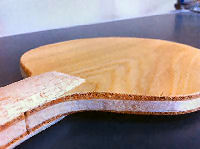
A comprehensive review with pictures of the Re-Impact Smart blade. The Smart blade is a balsa-based combination blade, that not only has considerably different speeds on either side of the blade, but also quite different characteristics. This makes it highly suitable for certain specific styles, which will also be discussed in this review.
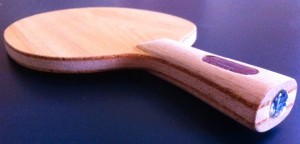 As some of you know already, I’ve been a big fan of the Re-Impact blades ever since I first discovered them. I think they are truly remarkable blades, and very unique, and this is also the reason we now carry a large range of Re-Impact blades in OOAK Shop.
As some of you know already, I’ve been a big fan of the Re-Impact blades ever since I first discovered them. I think they are truly remarkable blades, and very unique, and this is also the reason we now carry a large range of Re-Impact blades in OOAK Shop.
In general Balsa blades have some very unique properties, which makes them highly suitable for some very specific styles, while somewhat unsuitable for other style, as I outlined in an earlier article on Balsa Blades.
Re-Impact have found a way of combining some of the unique balsa blade properties with the properties of regular blades, all into one unique blade that suits a specific style. You can read all about the remarkable Re-Impact Blade Technology here, but we won’t go into this in this review.
Now lets get onto the Smart blade details. Here is the basic description and technical data:
The Re-impact Smart suits a conventional styles with low-catapult blades for long arm movement (long dwell-time) and ball-contact in the descending phase, combined with a slow backhand used with a lot of touch.
This combination blade offer an offensive forehand which suits a variety of inverted rubbers on the forehand (both regular and tensioned type rubbers) and a defensive type rubber on the backhand for controlling pace and/or spin. Highly suitable for styles with long pimples in OX on backhand and a thin tensor on forehand.
Technical data:
-
Size – standard (not over-sized, approx W=157mm, H=152m)
-
Weight ~65 gr,
-
Combination blade Speed FH =9, BH T=5
-
Rigidity=65%,
-
Thickness=11.8 mm
-
spin = over 240%
-
control = 25
What benefit does a thick blade offer?
 Well the obvious downside of a thick blade is that it generally makes a blade heavier, but since Re-Impact uses mostly ultra-light materials (specifically made for them), this is not really an issue. The two main benefits that a thick blade offers are the following:
Well the obvious downside of a thick blade is that it generally makes a blade heavier, but since Re-Impact uses mostly ultra-light materials (specifically made for them), this is not really an issue. The two main benefits that a thick blade offers are the following:
- Huge sweet-spot; The much thicker blade means that the sweet spot is much larger, virtually the full size of the blade face! This does not only offer more power from all positions of the blade face, but it also makes the rebound much more consistent no matter where you hit the ball on the blade. Just bouncing a ball on a bare (regular) blade and you’ll notice it bounces lower as you go towards the edge, dropping off very fast near the edge. With the thick Re-Impact blades the bounce is very consistent almost right to the edge.
- Isolation between forehand and backhand side; As most of you would know already, the backhand of the Smart blade is great at absorbing power, allowing you better control over the pace, whereas the forehand is great for producing power and offers high dwell time for spin on loops. Re-Impact blade technology takes full advantage of the thickness of the blade to isolate characteristics between forehand and backhand.
What style does the Smart blade suit best?
In my opinion the blade is best suited to those that like to loop on forehand and control the pace/spin on backhand. A unique property of the Re-Impact blade, that people often overlook is control over the pace. Particularly on the backhand, but also on the forehand, the blade feel slow and absorbs the pace really well on low impact, but has a real kick and is a lot faster on hard impact.
The Smart Forehand
The forehand has a soft but lively feel. Having tried a range of rubbers on this blade, I found that the blade adds quite a bit of liveliness to the rubber, so a springy Tensor-style rubber in Max tends to become hard to control. However using the same rubber with a thinner sponge works remarkably well, as the thin sponge adds a lot to feel and control, and the soft and lively feel of the forehand tends to give a similar feel to having a thicker Tensor sponge, giving you plenty of spin and speed without the feeling of it ‘bottoming-out’.
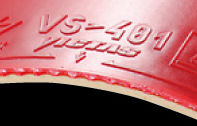 I found that hard sponged rubbers in about 1.8mm worked best for brush loopers with big swings (which is my game). Although I’m used to player with hard-sponged rubber in max thickness, I found that Victas VS > 401 in 1.8mm felt ideal for my big spinny forehand, and surprisingly did not bottom out and produced an extremly spinny loop. This is actually a chopper’s rubber, but in 1.8mm on the Smart blade it has plenty of kick and speed for me to hit winners. I did try the same rubber in 1.5mm and 2.0mm on the same blade as well. In 1.5mm it was beautiful for chopping but bottomed out on hard loops, whereas in 2.0mm it felt a little too lively for the short game, although loops were fast and spinny.
I found that hard sponged rubbers in about 1.8mm worked best for brush loopers with big swings (which is my game). Although I’m used to player with hard-sponged rubber in max thickness, I found that Victas VS > 401 in 1.8mm felt ideal for my big spinny forehand, and surprisingly did not bottom out and produced an extremly spinny loop. This is actually a chopper’s rubber, but in 1.8mm on the Smart blade it has plenty of kick and speed for me to hit winners. I did try the same rubber in 1.5mm and 2.0mm on the same blade as well. In 1.5mm it was beautiful for chopping but bottomed out on hard loops, whereas in 2.0mm it felt a little too lively for the short game, although loops were fast and spinny.
I also tried the Victas VS > 402 on the forehand, which is similar but a little softer and more lively. This rubber in 2.0mm worked very well on the Smart as well, but suited more compact strokes and smashes when the ball was there to be put away. Even with the rubber, chopping worked very well, but a little less controlled and spinny than the 401, although less sensitive to incoming spin as well.
If you only perform slow spinny loops and hit instead of powerloop, than soft tensors work really well, and even the more traditional Japanese/German or Chinese rubber in 1.5mm to 2.0mm work very well.
So how fast is the forehand? Well as I mentioned, the speed of the blade depends on the force at impact, so I would put the blade at an ALL+ speed for low impact, and the lower end of OFF at high impact. This choice is rubber can obviously move this range considerably.
The Smart Backhand
The backhand really does not look any different, but the difference is in the internal layers, which you can really only experience in play.
Being able to absorb the pace of an incoming ball, while still being able to attack the ball with decent speed is a rather unique property that some balsa blades offer, and Re-Impact blades are the best among them. This property becomes particularly important for long pimple players that like to take the ball ‘off the bounce’ and block short with spin reversal, and this is something I like to do as well.
I play with Tibhar Dtecs (OX) on the backhand, and even though this long pimple is quite lively, with the Smart backhand it takes the pace off really well, and the spin reversal is high. Not quite as high as the Re-Impact Dark Knight which would be the king of spin reversal, but still very good. Chop blocking or blocking with a side-swipe motion are also high effective return a short and low ball loaded with backspin (and some sidespin with the side-swipe).
When chopping loops away from the table the soft and slow feel allows you to load up the backspin, and the Smart works remarkably well for this. Reversal would be better with an harder blade, but the ability to add you own spin is better with the Smart, so if you get good hard-speed on your chop, you’ll get loads of control and will return very high backspin, making it much harder for your opponent to attack hard again.
Coming from the Tachi the Smart is a little faster, closer to the Tachi Plus. Attacking backspin balls is easiest with the Smart though, as it seems to be able to generate more pace when you need it. The Smart blade shares a lot of similarity to the Tachi (which is the blade that made Re-Impact famous outside Germany). For the highest control and best absorption of pace, the Tachi is a little ahead of the Smart, but the Smart has better reversal on backhand (although faster) and offer better attacking ability on the backhand, and the looping is clearly faster and feels more like a regular blade. For me, the extra pace on the forehand on the Smart made it more suitable for me, however for those that like faster rubber, this made not be the same.
How does it work with the new plastic balls?
I’ve tried this blade with both seamless and seamed plastic balls, and both work really well. Blocks with the backhand comes off slower and lower, which is usually exactly what you want when playing with long pimples. With the plastic balls it’s even easier to return serves low and short, as the bat feel both less bouncy and less sensitive to spin.
When it comes to the forehand, there is not that much difference compared to other bats with the plastic balls. In general the ball comes off slower with a little less spin.
Conclusion
For me personally, this is the best blade I’ve ever found, and it suits a player that like to attack on backhand and control/manipulate of the backhand perfectly. Combined with the Victas rubbers mention above, it comes absolutely perfectly, and I feel lucky to stumble upon this combination, as finding suitable forehand AND backhand for combination players can be a bit of nightmare sometimes.
Since I started writing this several months ago, and never seem to be able to finish it, I’ve decided to publish this review now, and will add more information later, depending on the amount of interest and questions asked. SO if you’ve got question, ask them below, and I’ll be happy to add my comments and thoughts.

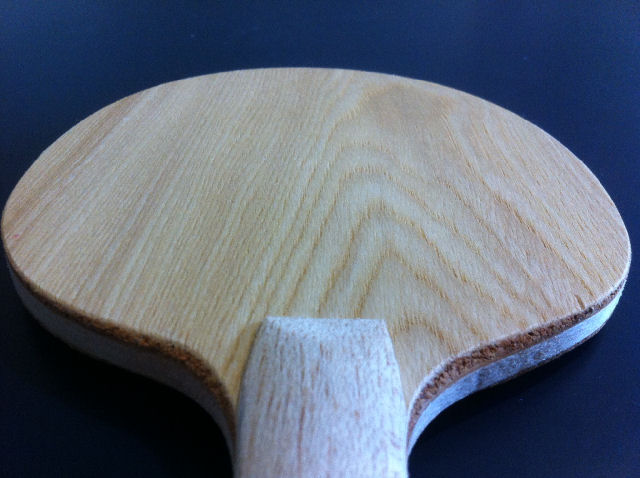


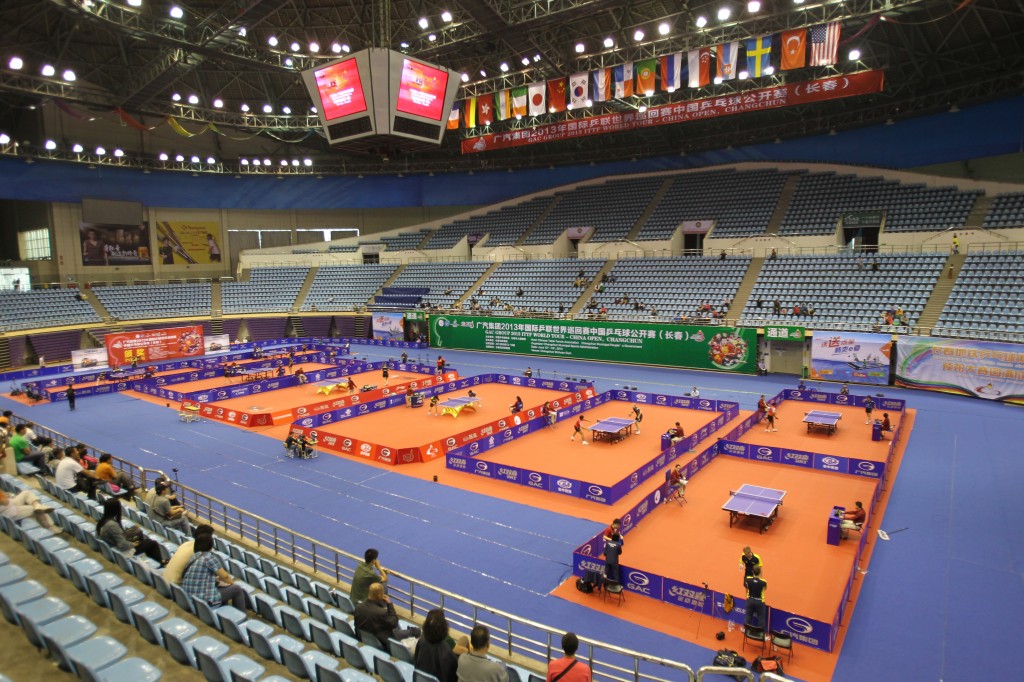
hello, what’s the difference between smart and swift especially as regards the forehand?
I have a re-impact dream and layers appear the same as those of the swift and smart. What differentiates them?
Thank you very much for your answer.
Regards
I absolutely love this blade with Victas 402 limber 1.8 on my FH & Tibar Grass OX on my BH I’m in heaven, the large sweet spot gives my superb control.